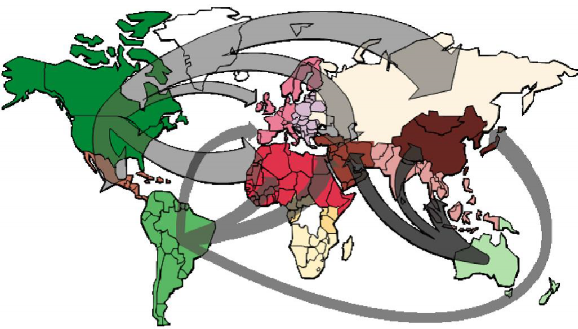9. Virtual Water
The concept of “virtual water” was introduced by Prof. Allan in the early 1990s and refers to the
water that is required for the production of agricultural commodities, or in other words the water
“embedded” in agricultural products. For instance, it takes 1,600 cubic meters of water on average to produce one metric tonne of wheat. The water is said to be virtual because once the wheat is grown, the real water used to grow it is no longer actually contained in the wheat. The concept of virtual water helps us realize how much water is needed to produce different goods and services. In semi-arid and arid areas, knowing the virtual water value of a good or service can be useful towards determining how best to use the scarce water available.
Virtual water trade refers to the idea that when goods and services are exchanged, so is virtual water. When a country imports one tonne of wheat instead of producing it domestically, it is
saving about 1,300 cubic meters of real indigenous water. If this country is water-scarce, the water that is 'saved' can be used towards other ends. If the exporting country is water-scarce, however, it has exported 1,300 cubic meters of virtual water since the real water used to grow the wheat will no longer be available for other purposes. Water-scarce countries like Israel discourage the export of oranges (relatively heavy water guzzlers) precisely to prevent large quantities of water being exported to different parts of the world.
Limitation of the Virtual water measures
♤ Relies on an assumption that all sources of water, whether in the form of rainfall or provided through an irrigation system, are of equal value.
♤ Implicitly assumes that water that would be released by reducing a high water use activity would necessarily be available for use in a less water-intensive activity. For example, the implicit assumption is that water used in rangeland beef production would be available to be used to produce an alternative, less water-intensive activity. As a practical matter this may not be the case, nor might the alternatives be economic.
♤ Fails as an indicator of environmental harm nor does it provides any indication of whether water resources are being used within sustainable extraction limits. The use of virtual water
estimates therefore offer no guidance for policy makers seeking to ensure that environmental objectives are being met.

♤ Importing food could pose the risk of further political dependence. The notion of "Self Sufficiency" is pride among people of many nations.
